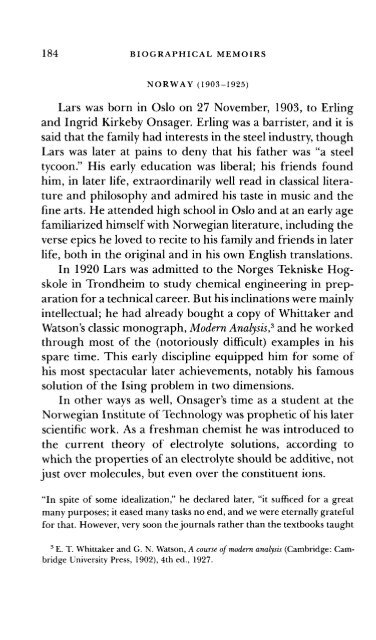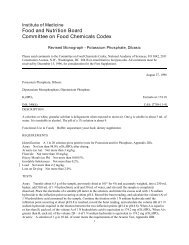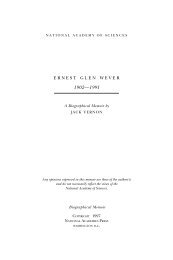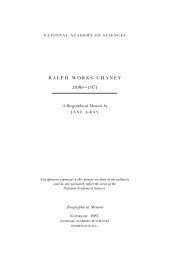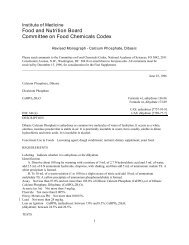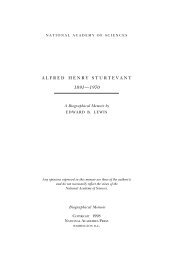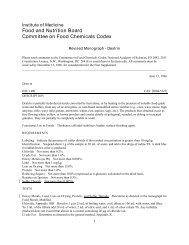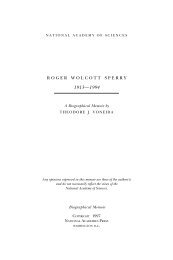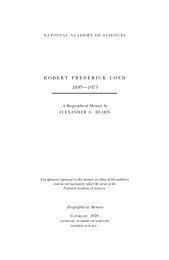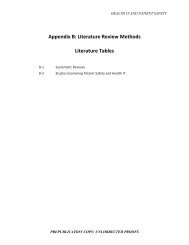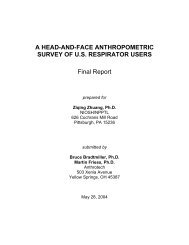LARS ONSAGER - The National Academies Press
LARS ONSAGER - The National Academies Press
LARS ONSAGER - The National Academies Press
You also want an ePaper? Increase the reach of your titles
YUMPU automatically turns print PDFs into web optimized ePapers that Google loves.
184 BIOGRAPHICAL MEMOIRS<br />
NORWAY (1903-1925)<br />
Lars was born in Oslo on 27 November, 1903, to Erling<br />
and Ingrid Kirkeby Onsager. Erling was a barrister, and it is<br />
said that the family had interests in the steel industry, though<br />
Lars was later at pains to deny that his father was "a steel<br />
tycoon." His early education was liberal; his friends found<br />
him, in later life, extraordinarily well read in classical literature<br />
and philosophy and admired his taste in music and the<br />
fine arts. He attended high school in Oslo and at an early age<br />
familiarized himself with Norwegian literature, including the<br />
verse epics he loved to recite to his family and friends in later<br />
life, both in the original and in his own English translations.<br />
In 1920 Lars was admitted to the Norges Tekniske Hogskole<br />
in Trondheim to study chemical engineering in preparation<br />
for a technical career. But his inclinations were mainly<br />
intellectual; he had already bought a copy of Whittaker and<br />
Watson's classic monograph, Modern Analysis, 3 and he worked<br />
through most of the (notoriously difficult) examples in his<br />
spare time. This early discipline equipped him for some of<br />
his most spectacular later achievements, notably his famous<br />
solution of the Ising problem in two dimensions.<br />
In other ways as well, Onsager's time as a student at the<br />
Norwegian Institute of Technology was prophetic of his later<br />
scientific work. As a freshman chemist he was introduced to<br />
the current theory of electrolyte solutions, according to<br />
which the properties of an electrolyte should be additive, not<br />
just over molecules, but even over the constituent ions.<br />
"In spite of some idealization," he declared later, "it sufficed for a great<br />
many purposes; it eased many tasks no end, and we were eternally grateful<br />
for that. However, very soon the journals rather than the textbooks taught<br />
3 E. T. Whittaker and G. N. Watson, A course of modern analysis (Cambridge: Cam<br />
bridge University <strong>Press</strong>, 1902), 4th ed., 1927.


